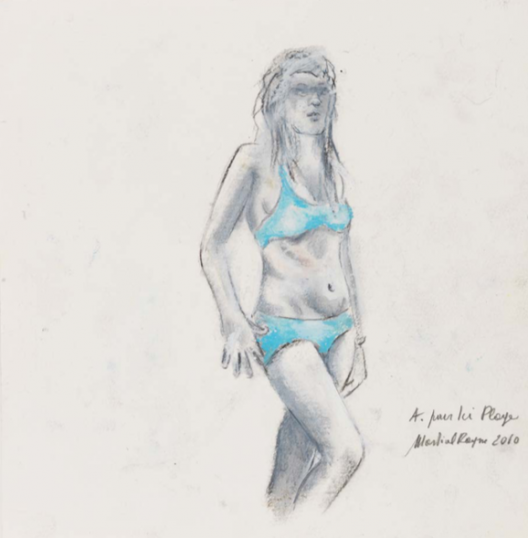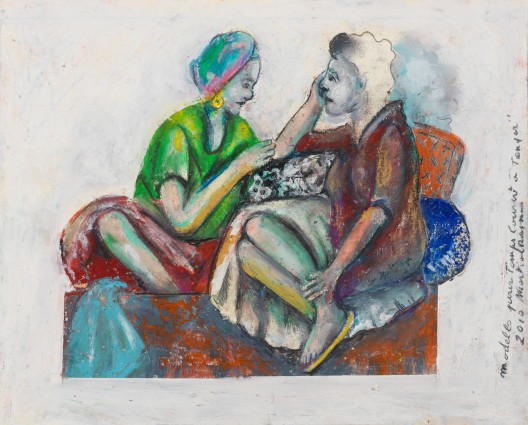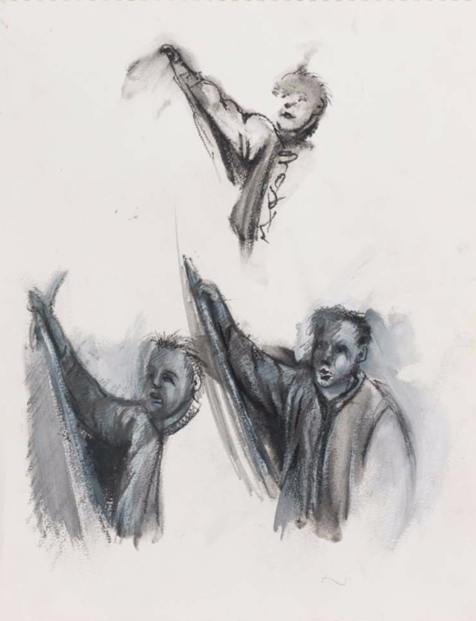By Dr. Sophie Goetzmann
Martial Raysse
11/01/2020 – 07/03/2020, HDM Gallery (798 Art District, No 4 Jiuxianqiao Lu Chaoyang District – Beijing 100015)
The HdM gallery is currently hosting an exhibition of French artist Martial Raysses’s works on paper. Born in 1936 in a ceramicist family, Raysse is perhaps one of the most important and well-known artist of the contemporary art French scene.
After studying literature and decorative arts in Nice, Raysse started doing abstract painting as an autodidact, participating in several group exhibitions in the south of France. 1959, calling himself an “engineer of vision”, he began to make his first assemblages, made of items bought at the supermarket and put together in a Plexiglas box. Those works were deeply inspired by Duchamp’s readymade, the anti-art spirit of Dada, but also reminded of Andy Warhol’s interest for new, colorful industrial objects. With these original installations, he received an immediate attention and had his first exhibitions in Paris. There, he was involved in 1960 in the artists French group The New Realists, among with Yves Klein or Arman. Reacting against the domination of abstract painting in Paris, those artists explored the contemporary reality by incorporating found objects or trash to their works.
However, Raysse quickly distanced himself from the group, for he felt a greater affinity for American pop artists. Moving to New York, he became close to Robert Rauschenberg, and took part in many exhibitions with Andy Warhol or Roy Lichtenstein. In 1962, he began to incorporate neon light in his assemblages or his paintings, often taking the female face as a subject. Just like Warhol, Raysse was fascinated with models from advertisements or fashion photographs, and painted them with bright, flashy colors. In the same spirit, he created in 1964 a series of paintings called Made in Japan, in which he turned classic paintings from Ingres or Tintoretto into pop compositions, recreating them with fluorescent colors that reminds of plastic, artificial lighting or publicity. At the end of the 60’s, he was thus an extremely successful pop artist, receiving international critical acclaim, which led him to represent France at the Venice Biennale in 1966.
However, at the beginning of the 70’s, disillusioned with the official art world, he decided to move to the countryside and progressively changed his style. From 1977, he began to make large-scale figurative paintings or sculptures; he received several public commissions, and realized many works for public places in Nimes (fountain in the Assas square) or Paris (painting for the hall of the National Library).

Martial Raysse,”A. pour ici plage”, pastel on paper, 24 × 24 cm, 2010

In this very diverse and eclectic work, drawing appears to be a common thread for Martial Raysse. Indeed, the artist always draw, was it as a study for his paintings or for his own pleasure. The collection gathered at the HbM gallery reflects the diversity of Raysse’s work and the different periods of his career. Three drawings representing young women (A. pour ici plage; Emilie pour ici plage; Renata pour ici plage) are sketches made for a huge painting (3× 9 meters big), Ici plage, now kept in the collection of famous art patron François Pinault. While realized in 2012, this painting is deeply rooted in Raysse’s past as a pop artist. The drawings show stereotypical female bodies, naked or half-naked, dressed in a bikini with bright and flashy colors (blue, pink), who seem to just come out of an advertisement for bath suits.

Martial Raysse, “Copie d’après Raphael Villa Borghese”, charcoal on paper, 40 × 32 cm, 1988
The drawing made after Raphaël also recalls his obsession for perfect, idealized female faces, as well as his very classic inspiration: as a self-taught artist, Raysse learned a lot from copying old masters, which he did since the early 60’s with his Made in Japan series. However, he makes here his own version of Raphaël’s Young woman with unicorn, and his drawing reminds more of Ingres or even of the early Picasso. In a similar way, the pastel Modèles pour temps couvert à Tanger is a clear reference to Ingres and Delacroix’s orientalism, with its bright and contrasted colors.

Martial Raysse,”Modèles pour Temps Couvert à Tanger”, pastel on paper, 19 × 23 cm, 2010
Although most of those drawings are sketches made to prepare a bigger work or a painting (Ici plage, Now, Mais dites une seule parole) they allow us to understand Raysse’s extremely meticulous way of working, just like a classic painter. This strong work ethic may still explain his big success today: famous worldwide, Martial Raysse had a big retrospective of his career at the Centre Pompidou in Paris, in 2014.

Martial Raysse,”Paulo esquisse pour Mais dites une seule parole”, mixed media on paper , 32 × 41 cm, 1994